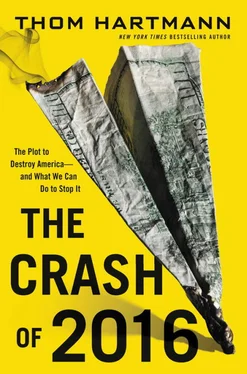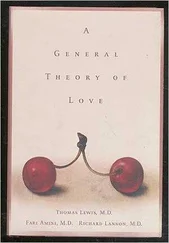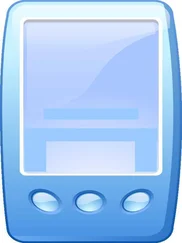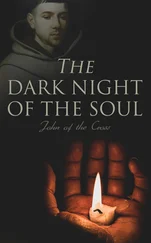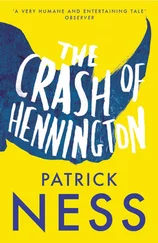The Court Takes the Power
But in 1803, a hard-right-wing (Federalist) chief justice named John Marshall (who’d been only eleven years old when the Declaration of Independence was written and signed) ruled, in the case of Marbury v. Madison , that the Supreme Court could strike down laws as “unconstitutional.”
Although the power of “judicial supremacy” over the other two branches had been discussed extensively in the early days of the republic and debated in the constitutional convention, it had been rejected and does not appear in the Constitution.
But Marshall took it onto himself and his court, instantly transforming the Supreme Court from “the weakest of the three” to the absolute overlord tribunal.
John Marshall had, in effect, turned himself into a king, along with his colleagues on the Supreme Court. No matter what Congress and the president—the other two branches of government—did, the Supreme Court could overturn them. A tiny group of unelected lawyers who, like kings of old, had jobs for life, now controlled the fate and destiny of the United States.
President Thomas Jefferson went apoplectic.
He wrote that if that decision wasn’t challenged by Congress: “[T]hen indeed is our Constitution a complete felo-de-se [a suicide pact]… The Constitution, on this hypothesis, is a mere thing of wax in the hands of the judiciary, which they may twist and shape into any form they may please.” 176
Marshall and the court backed down, at least in appearance. For as long as Jefferson was alive, Marshall never again ruled a law unconstitutional. He never again said that a few unelected judges were the kings of America, with nobody else having the power to undo their decisions.
Nonetheless, Jefferson saw the direction of the future. Several decades later (while Marshall was still the chief justice, as he remained for nine years after Jefferson died), Jefferson wrote: “The judiciary of the United States is the subtle corps of sappers and miners constantly working underground to undermine our Constitution… I will say, that ‘against this every man should raise his voice,’ and, more, should uplift his arm.”
Because, Jefferson said, “For judges to usurp the powers of the legislature is unconstitutional judicial tyranny… One single object… will entitle you to the endless gratitude of society; that of restraining judges from usurping legislation.”
But as much as he tried, Jefferson was not able to stir up enough outrage in Congress to pass a law limiting the Supreme Court from continuing its new “judicial supremacy” doctrine of “judicial review” of laws in the context of the Constitution. Jefferson had actually won in the Marbury ruling, which somewhat deflated the outrage he might have been able to otherwise marshal from politicians in his Democratic Republican Party (today’s Democratic Party).
And most politicians weren’t seeing the long view—they never, in their wildest dreams, imagined that the court would become the final hurdle over which every single law passed by Congress and signed by the president must leap.
As mentioned, the Supreme Court was very wary about using judicial review in its first century. Mostly it just did what the Constitution says it should do—be the final court of appeals in legal disputes and criminal prosecutions, and in issues between the states. The buck has to stop somewhere, and that’s the Supreme Court.
But striking down laws? That’s a power only kings have, and in the modern era even most kings in constitutional monarchies don’t have that power. In the United Kingdom, for example, not only does the king (or queen) not have the power to strike down laws, neither does the United Kingdom’s own supreme court. Ditto for the royal family and the supreme court of The Netherlands.
The Supreme Court was beyond their constitutional power when they handed George W. Bush the victory in 2000 by ruling that if all the votes were counted in Florida, as that state’s supreme court had ordered, it would “cause irreparable harm to petitioner [George W. Bush].”
They were beyond their constitutional power every single time they struck down a law passed by Congress and signed by the president over the years.
And most important, the Supreme Court was way beyond their constitutional authority every single time they created out of whole cloth new legal doctrines, such as “separate but equal” in Plessy v. Ferguson , “privacy” in Roe v. Wade , or “corporations are people” in Citizens United v. Federal Election Commission .
But in the fine tradition of John Marshall, today’s Supreme Court wants you to believe that they are the über-overlords of our nation. They can make George W. Bush president, without any appeal. They can make money into speech, they can turn corporations into people, and the rest of us have no say in it.
And they’re wrong.
It’s not what the Constitution says, and it’s not what most of our Founders said.
Which raises the question: If the Supreme Court can’t decide what is and what isn’t constitutional, then what is its purpose? What’s it really supposed to be doing?
The answer to that is laid out in the Constitution in plain black-and-white. It’s the first court where the nation goes for cases involving disputes about treaties, ambassadors, controversies between two or more states, between a state and citizen of another state, between citizens of different states, and between our country and foreign states. Read Article 3, Section 2 of the Constitution—it’s all there.
Not a word in there about “judicial supremacy” or “judicial review”—the supposed powers of the court to strike down (or write) laws by deciding what is and what isn’t constitutional.
President Thomas Jefferson was pretty clear about that—as were most of the Founders—and the court didn’t start seriously deciding “constitutionality” until after all of them were dead. But back in the day, here’s what Jefferson had to say:
The Constitution has erected no such single tribunal, knowing that to whatever hands confided, with the corruptions of time and party, its members would become despots. It has more wisely made all the departments co-equal and co-sovereign within themselves… When the legislative or executive functionaries act unconstitutionally, they are responsible to the people in their elective capacity. 177
Their elective capacity? That’s a fancy presidential-founder way of saying that the people can toss out on their butts any member of Congress or any president who behaves in a way that’s unconstitutional. The ultimate remedy is with the people—it’s the ballot box. If we don’t like the laws being passed, then we elect new legislators and a new president. It’s pretty simple.
But without the Supreme Court, some say, we never would have had Brown v. Board of Education in 1954, which ended apartheid in America, or Roe v. Wade , which ended restrictions on abortion in 1973.
Maybe.
Brown v. Board was mostly the Supreme Court reversing itself from its own 1886 Plessy v. Ferguson decision, which is what established legal apartheid in America. And if the Supreme Court hadn’t decided Roe v. Wade —remember, the birth control pill had just been invented and brought to market thirteen years earlier and the women’s movement in 1973 was in full bloom—then it would have been just a matter of a few years before Congress took care of it.
The fact of the matter is that the Supreme Court has never found eternal truths in the Constitution—they just reflect current popular view, and they usually do that with about a twenty-year lag time.
Читать дальше
